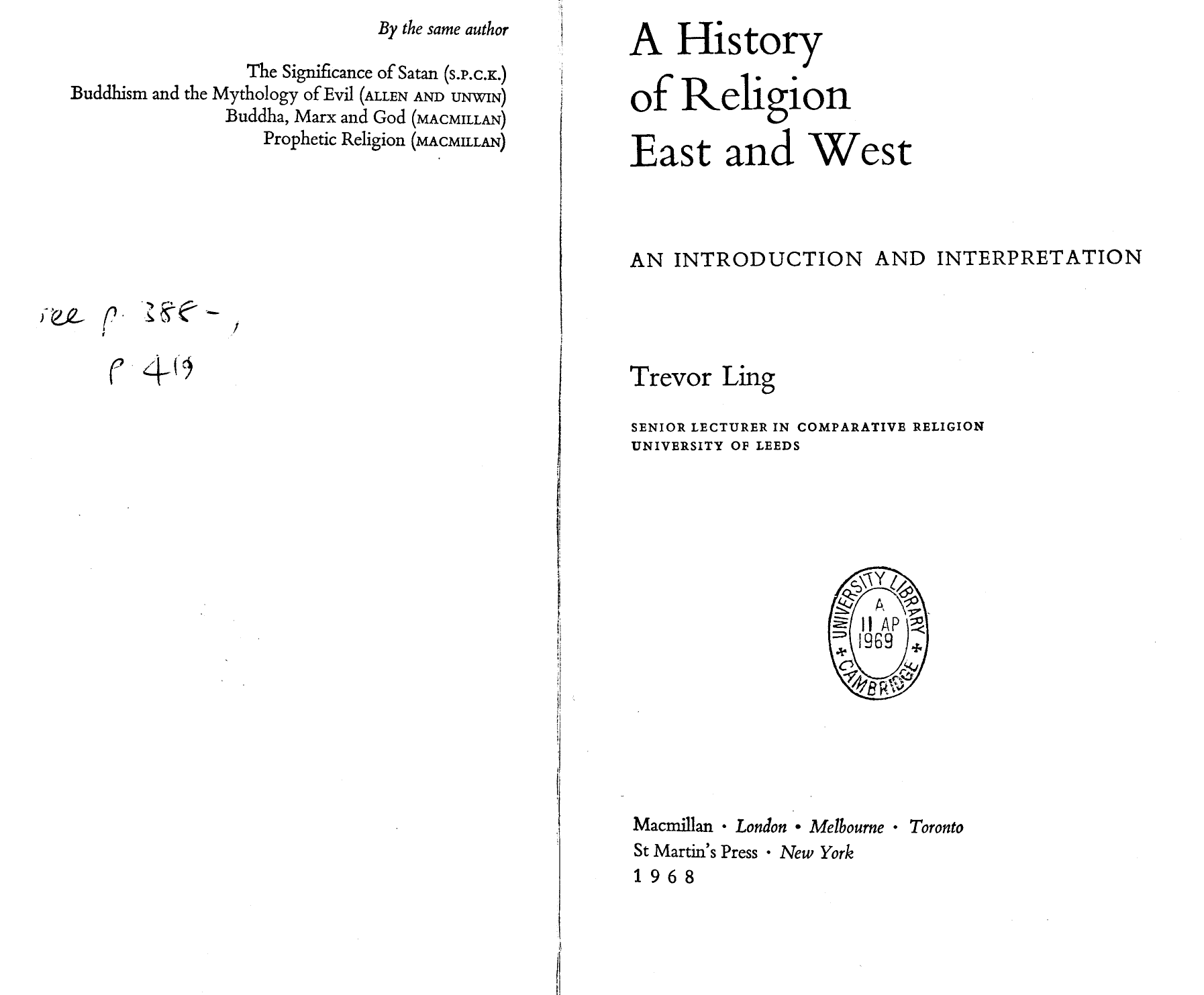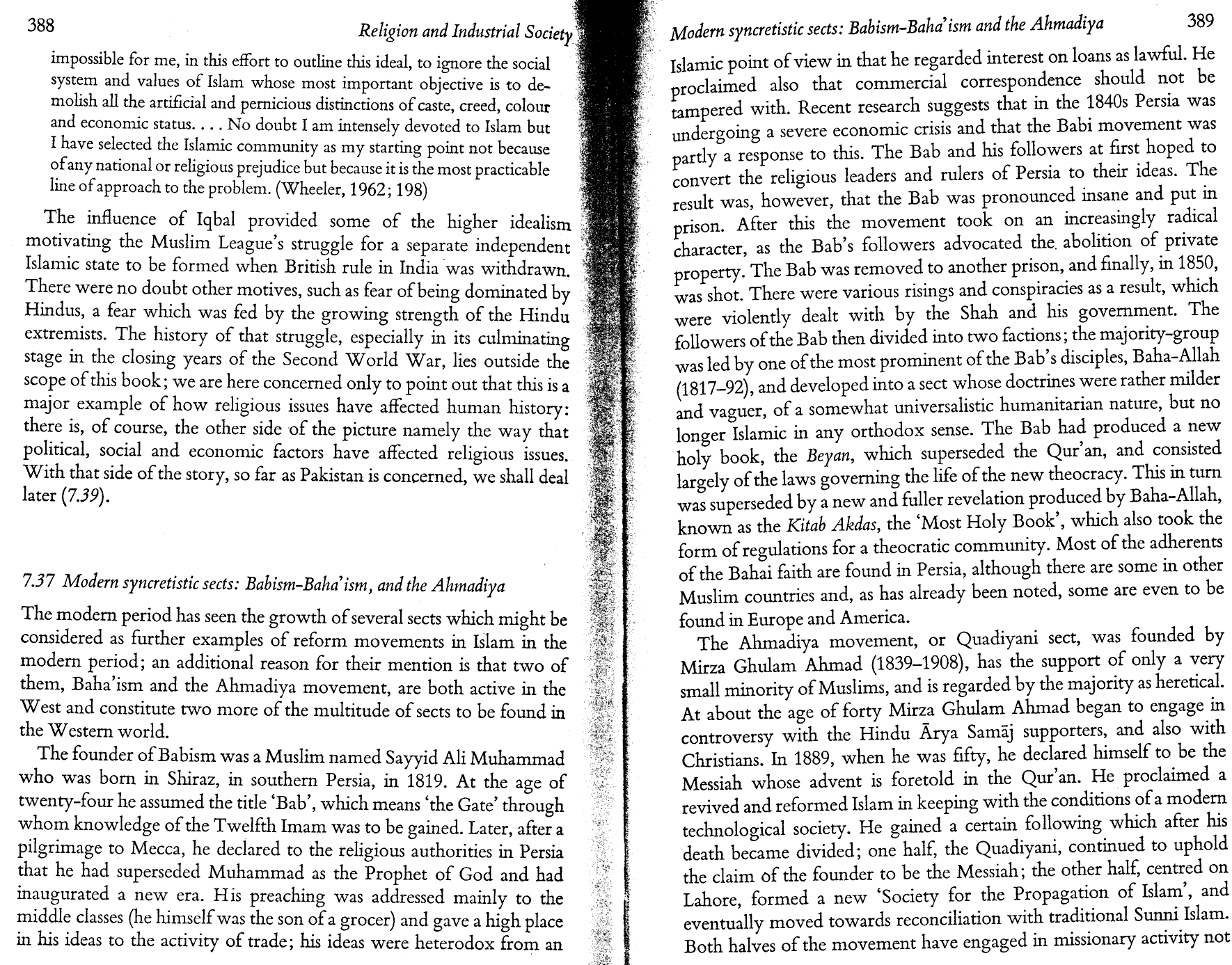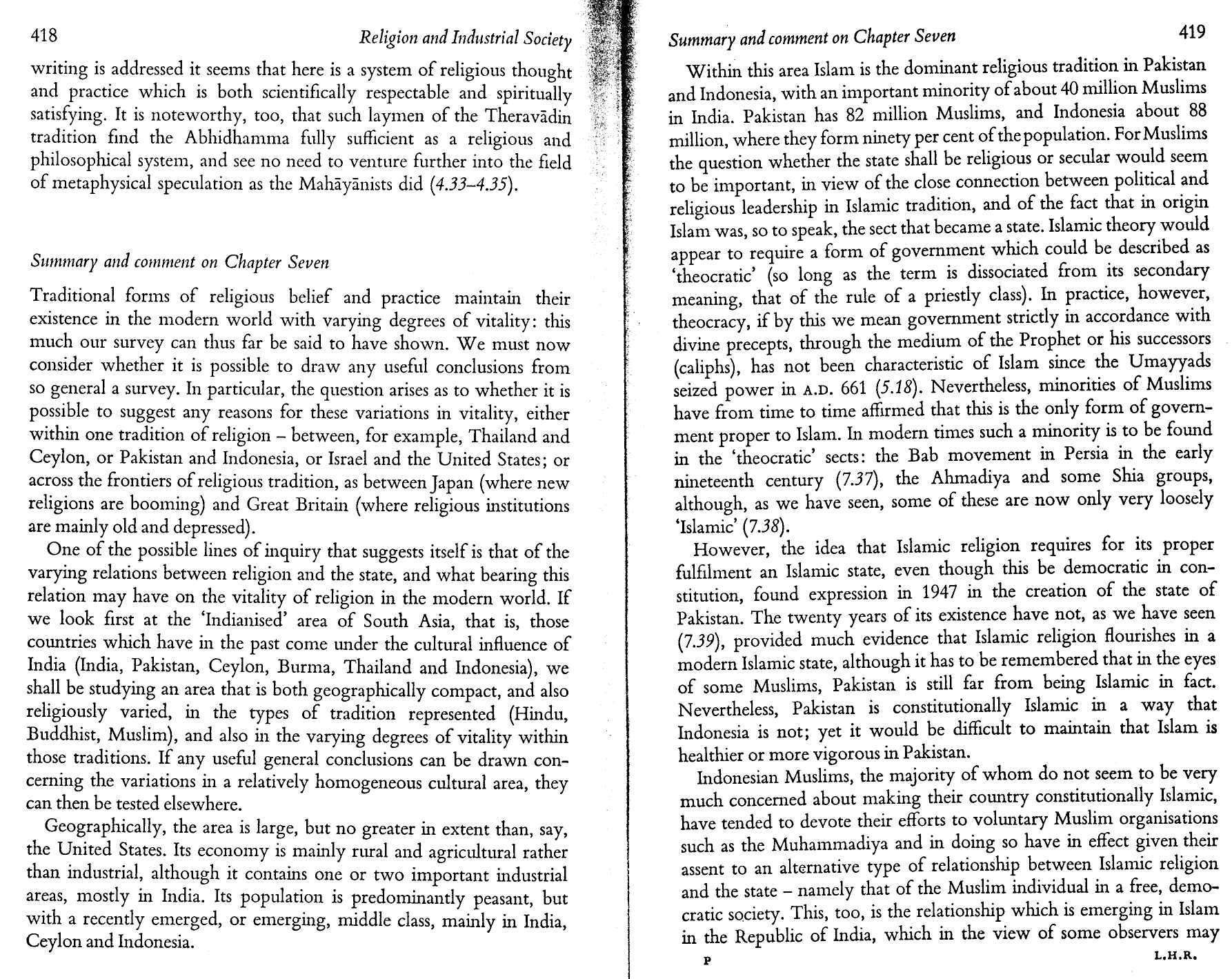
|
|
Abstract: 2-page summary of Bábí history. Notes: See the rest of this book online at scribd.com. |
Modern Syncretistic Sects:
Babism-Bahá'ísm and the Ahmadiyya
by Trevor Ling
published in A History of Religion East and West, pages 388-390, 419London: Macmillan, 1968
1. Text
[page 388]
Modern Syncretistic Sects: Babism-Bahá'ísm and the Ahmadiyya
The founder of Babism was a Muslim named Sayyid Ali Muhammad who was born in Shiraz, in southern Persia, in 1819. At the age of twenty-four he assumed the title 'Bab', which means 'the Gate' through whom knowledge of the Twelfth Imam was to be gained. Later, after a pilgrimage to Mecca, he declared to the religious authorities in Persia that he had superseded Muhammad as the Prophet of God and had inaugurated a new era. His preaching was addressed mainly to the middle classes (he himself was the son of a grocer) and gave a high place in his ideas to the activity of trade; his ideas were heterodox from an
[page 389]
Islamic point of view in that he regarded interest on loans as lawful. He proclaimed also that commercial correspondence should not be tampered with. Recent research suggests that in the 1840s Persia was undergoing a severe economic crisis and that the Babi movement was partly a response to this. The Bab and his followers at first hoped to convert the religious leaders and rulers of Persia to their ideas. The result was, however, that the Bab was pronounced insane and put in prison.
After this the movement took on an increasingly radical character, as the Bab's followers advocated the abolition of private property. The Bab was removed to another prison, and finally, in 1850, was shot. There were various risings and conspiracies as a result, which were violently dealt with by the Shah and his government. The followers of the Bab then divided into two factions; the majority-group was led by one of the most prominent of the Bab's disciples, Baha-Allah (1817-92), and developed into a sect whose doctrines were rather milder and vaguer, of a somewhat universalistic humanitarian nature, but no longer Islamic in any orthodox sense.
The Bab had produced a new holy book, the Beyan, which superseded the Qur'an, and consisted largely of the laws governing the life of the new theocracy. This in turn was superseded by a new and fuller revelation produced by Baha-Allah, known as the Kitab Akdas, the 'Most Holy Book', which also took the form of regulations for a theocratic community. Most of the adherents of the Bahai faith are found in Persia, although there are some in other Muslim countries and, as has already been noted, some are even to be found in Europe and America.
The Ahmadiya movement, or Quadiyani sect, was founded by Mirza Ghulam Ahmad (1839-1908), has the support of only a very small minority of Muslims, and is regarded by the majority as heretical. At about the age of forty Mirza Ghulam Ahmad began to engage in controversy with the Hindu Arya Samaj supporters, and also with Christians. In 1889, when he was fifty, he declared himself to be the Messiah whose advent is foretold in the Qur'an. He proclaimed a revived and reformed Islam in keeping with the conditions of a modern technological society. He gained a certain following which after his death became divided; one half, the Quadiyani, continued to uphold the claim of the founder to be the Messiah; the other half, centred on Lahore, formed a new 'Society for the Propagation of Islam', and eventually moved towards reconciliation with traditional Sunni Islam. Both halves of the movement have engaged in missionary activity not
[page 390]
only in India but also in the West. Perhaps one of the most significant features of the history of the movement is the very slight measure of success it has had - almost negligible - in spite of its claim to present a form of Islam for the modern age.
[page 419]
... Islam is the dominant religious tradition in Pakistan and Indonesia, with an important minority of about 40 million Muslims in India. Pakistan has 82 million Muslims, and Indonesia about 88 million, where they form ninety per cent of the population. For Muslims the question whether the state shall be religious or secular would seem to be important, in view of the close connection between political and religious leadership in Islamic tradition, and of the fact that in origin Islam was, so to speak, the sect that became a state. Islamic theory would appear to require a form of government which could be described as 'theocratic' (so long as the term is dissociated from its secondary meaning, that of the rule of a priestly class). In practice, however, theocracy, if by this we mean government strictly in accordance with divine precepts, through the medium of the Prophet or his successors (caliphs), has not been characteristic of Islam since the Umayyads seized power in A.D. 661. Nevertheless, minorities of Muslims have from time to time affirmed that this is the only form of government proper to Islam. In modern times such a minority is to be found in the 'theocratic' sects: the Bab movement in Persia in the early nineteenth century, the Ahmadiya and some Shia groups, although, as we have seen, some of these are now only very loosely 'Islamic.'
2. Image scans (click image for full-size version)

|
|



